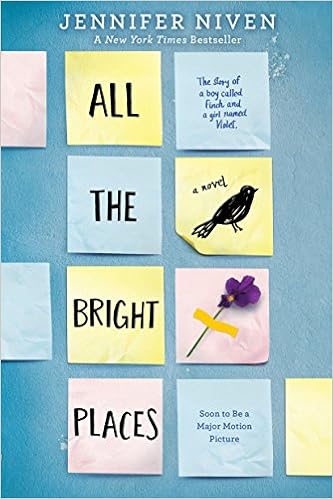As a teen librarian, it’s my duty to be as unbiased and inclusive as possible. A collection blossoming with diversity, difficulty, and depth is important for any patron, but it’s especially important for youth. The current Young Adult (YA) market provides me with a variety of deep and diverse pieces of literature. Books of any kind help answer questions of self discovery, and what’s even better is that there’s a book for everyone, especially those who don’t feel like they belong.
YA is rife with literature for youth who feel like outcasts. Even genre labels in the YA department are misfits! What’s labeled fantasy isn’t always JUST fantasy. It’s easier to get away with genre blending in this particular market because teens are willing to try new things. They aren’t set in tropes or endings you can anticipate (not that there’s anything wrong with that). Teens (and adults) want to be surprised, but they also want to feel included.
YA provides a place for misfits.
Sure, children and adult books include misfits, but young adult novels cater to isolation and self-discovery because during the teenager years a person realizes that she is not a child and is not an adult, she is in-between. In turn, teens feel isolated and feel the need to finally discover who they are as people, away from their parents. YA books reflect that.
When I was young, I didn’t feel like I belonged anywhere. I felt like I constantly tried to fade into the background because I wasn’t sure people would accept me. The characters in novels taught me about humanity and myself because they looked at people who were unafraid to be who they were inside. Whenever you feel alone or feel that no one understands your quirkiness, check out a few of the YA books below.
The Goose Girl by Shannon Hale

Shannon Hale was my safe harbor when I was young, and I can’t talk about misfits that resonated with me until I talk about The Goose Girl. Ani (with the strange ability to speak to birds, horses, and… other things) and even her desire to lead her country meant something to me because I saw myself in Ani and thought that if she could be queen material, so could I.
When I first read The Goose Girl, I wanted to be strong, brave, and magical just like Ani. She inspired me because even though she started off as powerless and unsure, she had quite an interesting character arc—one that took her completely out of her comfort zone and pushed her to be better. It was one of the first books where I realized that misfits could become the hero and become accepted.
All the Bright Places by Jennifer Niven
Please note, this book deals with depression and suicide.

This book encapsulates an intense feeling of isolation to a degree so insanely distilled that it makes me want to teleport myself inside and hug Finch and Violet! All the Bright Places, especially Theodore Finch’s true self, flies in the face of high school conformity. It’s ultimately about two teenagers who feel like the world doesn’t get them or their situation, until one day they find each other on top of a bell tower.
Finch is interesting because he’s a complete misfit. Before Finch met Violet, he jumped from label to label, a boy who was afraid he’d never fit in. He was bullied and used by his peers. People thought him odd. But, he was an astute, talented, and complex individual who had a troubled family life and a complex school life.
Finch and Violet let the reader know that you should write your poetry, see beauty in strange places, and find a friend to appreciate you for it. Shine true and only then will you find your light.
Making Friends by Kristen Gudsnuk

I have a coworker who describes middle school as a black hole, and I wholeheartedly agree. When I was in middle school, I frequently moved around, and it took some time before I found my true friends. In the meantime, I turned to reading, writing, drawing, and daydreaming to combat loneliness.
When I read Making Friends, it reminded me of how much people can change during middle school and making friends isn’t as easy as it used to be. How friends that were close to you are now in different classes or are completely different people. You have to figure out where to sit during the lunch period or try not to feel too anxious when your teacher assigns you to a random partner!
The main character solves this issue (at least temporarily) by discovering a magical sketchbook and literally drawing a popular, fantastically amazing new friend. As you can probably guess, nothing is ever that easy (come on, middle school and a magical sketchbook are involved), but being able to enjoy your favorite anime and find yourself without fear of backlash is powerful. The most important lesson was recognizing that other people feel the same way as you, and they’re just as weird in their own way. Making Friends lets the reader know that it’s okay to grow into yourself.
Finding books that celebrate the misfit is important. Books help us find ourselves and take pride. They help us realize that being ourselves is not just okay, it’s inspiring. We need misfit books because we’re all a little different, and that’s what makes life imperfectly beautiful and intriguing.

